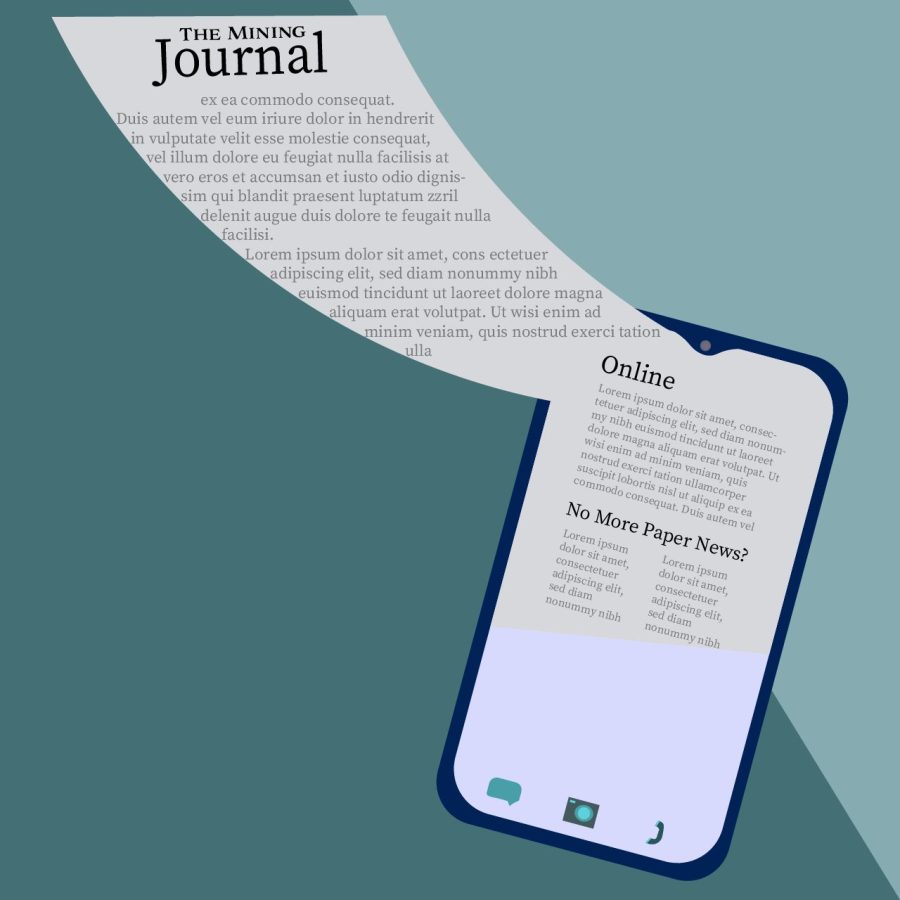Opinion — Podcasts are the future of news
January 18, 2023
If you are reading this, you likely consume the news on a daily basis.
For most of American history, people purchased a daily print newspaper as a means of staying up to date on the latest news in their area. While local newspapers are often regional in their content, most have sections that splay out national or international news that has been deemed worthy of inclusion by editors.
Print journalism has many positive attributes. It is tangible and can be easily transported from one place to the next. The content is perceived to be more credible by the general public, and it does not have to be finished in one sitting — allowing for leisurely reading.
However, print journalism does have some flaws. To start, you must be literate to understand its contents. Since the founding of our country, if you could not read you either missed out on breaking news or had to rely on others to inform you. And while some newspapers include color images, most depend on a writer’s ability to paint scenes through word choice.
With advancements in technology, print journalism has become incredibly inaccessible when compared to other forms of media consumption.
Broadcast journalism started growing in popularity in the early 1950s, eventually usurping print journalism in viewership as time marched on. As Americans began to purchase television sets, they no longer had to leave the comfort of their home to hear the news.
Unlike print journalism, which appeals solely to the eye, broadcast journalism appeals to both the eye and the ear. By using captivating footage, whether it be of wartime conflict or the aftermath of a natural disaster, and combining it with audio interviews of firsthand accounts, people were given the opportunity to — seemingly — experience the news firsthand.
Even better, broadcast journalism does not require literacy. People could now listen to the news as they washed the dishes, ate dinner or folded laundry.
However, broadcast journalism has its flaws as well. News programs run on a schedule, meaning you must be in front of your television at 6 o’clock to catch the evening news. And unlike print journalism, which can be kept forever and purchased days late, if you miss a news broadcast you cannot retrieve it later.
While some of these negative factors have been alleviated since news organizations began to publish and upload via the internet, what if I told you that there is a new medium for news consumption that is superior to both print and broadcast journalism?
Podcasts.
Podcasts, which can be found on any streaming platform, are audio files that can be downloaded and listened to via the internet. While topics can vary from comedy to true crime, many reputable news organizations are now uploading content in podcast form.
This should not come as a surprise, for podcasts have everything that both print and broadcast journalism lack.
A podcast can be downloaded directly to your device, which allows you to both listen on the go and without access to the internet. While you will have to wait for your organization of choice to upload, you no longer have to be home at a specific time to catch the news.
Podcasts also do not disappear unless they are deliberately removed by the creator or streaming platform. This allows you to skip ahead, stop or resume listening from the exact point you left off at a later date and time. This means no more marking tabs on a paper or reminding yourself to hit record on your VCR.
And while some podcasts may lack the visual appeal that broadcast journalism flaunts, most podcasts have YouTube channels associated with their accounts to make up for that loss. Presenting themselves similarly to a TV newsroom set, these channels can easily upload video, imagery and audio interview clips to their page.
Your news now rests in the palm of your hand.
The only major drawback to relying on podcasts for news is that your choices are endless. Many reputable news sources, like NPR, BBC and The New York Times, have podcasts that contain verified and factual information. However, any individual can create and upload a podcast.
Streaming platforms do not have the same vetting process that print and broadcast journalism requires to be published. With the foundations creating internet law still quite young, those uploading podcasts do not have to worry about rules and regulations the same way that legacy media does.
This can lead to the spread of misinformation, disinformation and other falsities that can be harmful. But that is not to say that print and broadcast journalism are free of this type of content. The opposite is true, although at a lesser scale.
No matter what, podcasts are here to stay. It is estimated that more than 5 million podcasts currently exist. So, even if you are not looking for a fresh source of news, I recommend scouring your streaming platform of choice for a podcast that discusses your favorite hobbies or topics. You will be surprised by what you find.
Editor’s Note: The North Wind is committed to offering a free and open public forum of ideas, publishing a wide range of viewpoints to accurately represent the NMU student body. This is a staff column, written by an employee of the North Wind. As such, it expresses the personal opinions of the individual writer, and does not necessarily reflect the position of the North Wind Editorial Board.




























